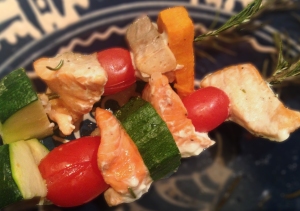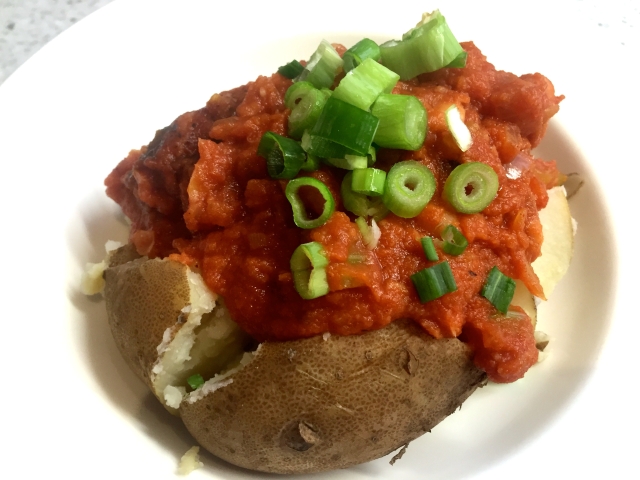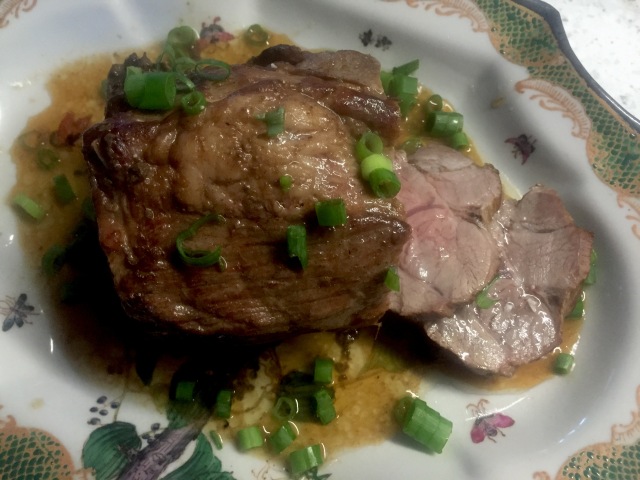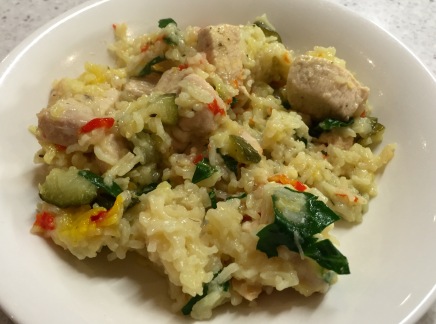
Everyone knows that salmon is good for us. In fact, it’s one of the best-known sources of omega 3, an essential fatty acid that (as its name suggests) is necessary for health and wellbeing.
Only problem is, salmon is so expensive! At our local fish shop, salmon fillets are around $45 per kg. That makes feeding a family of 6 a pretty expensive exercise.
There is a way to put fresh salmon on the table, however, in a way that won’t blow the budget OR make everyone feel they’re on starvation rations. It’s simple, cheap and also looks great on the table.
It’s salmon skewers.
I got the idea from our local fish shop that has started selling trays of ‘diced salmon’ for just $20/kg. My guess is that the chunks of salmon are the messy ends of the fillets that get trimmed off so that everything looks nice and neat and even. There’s nothing wrong with the fish, and it’s already cut into skewer-friendly chunks.
Of course, you could buy salmon fillets and chop them up yourself, happy in the knowledge that a little bit of fish will go a very long way.
A couple of added bonuses for this meal is that you can get a multitude of different veggies into your kids’ mouths, and the skewers are a visual treat – especially if you use rosemary stems, as I did. It’s a simple meal that packs a huge visual and omega 3 punch for a comparatively small amount of money.
Salmon skewers
(serves 6)
3 salmon fillets (or around 800gm of diced salmon)
3 cups diced vegetables eg red capsicum, sweet potato, zucchini, pumpkin
cherry tomatoes
12 bamboo skewers OR 15cm long rosemary stems*
1 lemon
1. If using bamboo skewers, soak them in some water beforehand for at least 15 minutes to reduce the risk of them burning.
2. Chop the salmon into large, bite-sized chunks.
3. Make sure the vegetables are cut into similar sized chunks to the salmon. The salmon will only take a few minutes to cook, so quickly zap or steam any veggies that will need more time, such as sweet potato and zucchini. You want them to be firm enough that they will keep their shape on the skewer.
4. Thread 3 chunks of salmon and 6 or 7 veggies onto each skewer in an alternating pattern.
5. Drizzle with lemon juice and cook in the oven at 180 degrees, or in a fry pan or on the BBQ, for a few minutes until the salmon starts to turn slightly pale on the outside.
6. Serve with a nice salad, couscous or rice.
* choose older, woody stems that will be firm enough to hold the salmon and veggies, and strip off all the leaves except for a nice tuft at one end.








![photo[1]](https://pressureinthekitchen.files.wordpress.com/2014/08/photo1.jpg?w=300&h=265)